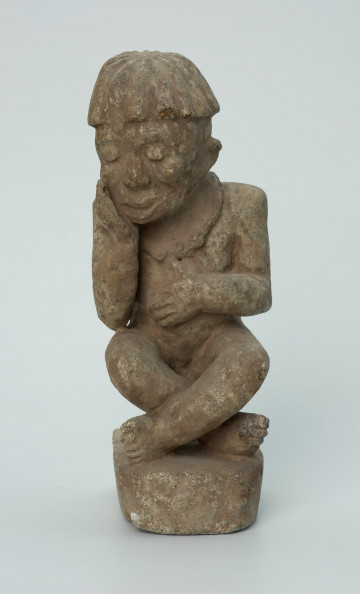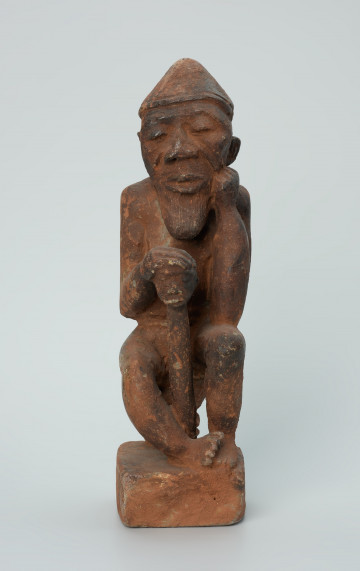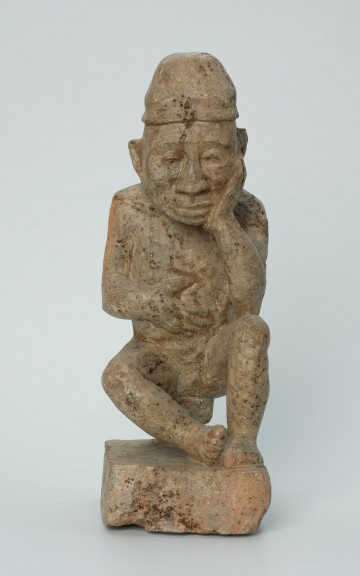
Ancestor worship figure
około 1901 — 2000
National Museum in Szczecin
Part of the collection: Mintadi figurines
The sculpture depicts mfumu - a ruler or chief of a village. Most mintadi are surrogates of a ruler still alive but temporarily absent and effigies of deceased chief. They are objects designed to ensure continuity and permanence of power.Mfumu can be recognised by their attributes and pose. The man is presented with a pipe, considered by the Bakongo as a sign of power. His face and body position express meditation. The ruler immortalised in the sculpture guarantees the support of supernatural forces for the community under his care. The Bacongo are also known in ethnological literature as Congo, Makongo and Bacongo. They live in the lower Congo River, on both sides of the river, in what is now Angola, the Democratic Republic of Congo and the Republic of Congo. They speak the Kikongo language of the Bantu group. They are engaged in agriculture. Their crops include cassava, bananas, maise, sweet potatoes, peanuts, beans, taro, coffee, cocoa and urena. Some groups are still involved in fishing and hunting. Today, many Bakongo live and work in the cities where they are mainly involved in the trade. Their family structure is based on a matrilineal kinship system where descent is inherited through the maternal line. Their traditional beliefs centre around ancestor worship and the cult of the creator god Nzambi Mpungu.
Katarzyna Findlik-Gawron
Author / creator
Dimensions
cały obiekt: height: 27 cm, width: 12,6 cm
Object type
sculpture
Creation time / dating
Creation / finding place
Identification number
Location / status

około 1901 — 2000
National Museum in Szczecin

około 1901 — 2000
National Museum in Szczecin

około 1901 — 1950
National Museum in Szczecin
DISCOVER this TOPIC
National Museum in Szczecin
DISCOVER this PATH
Educational path